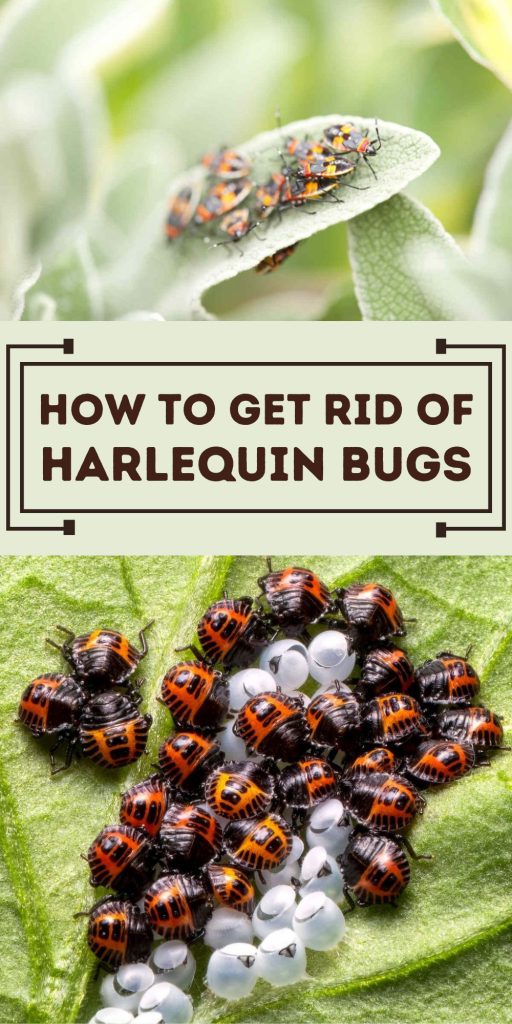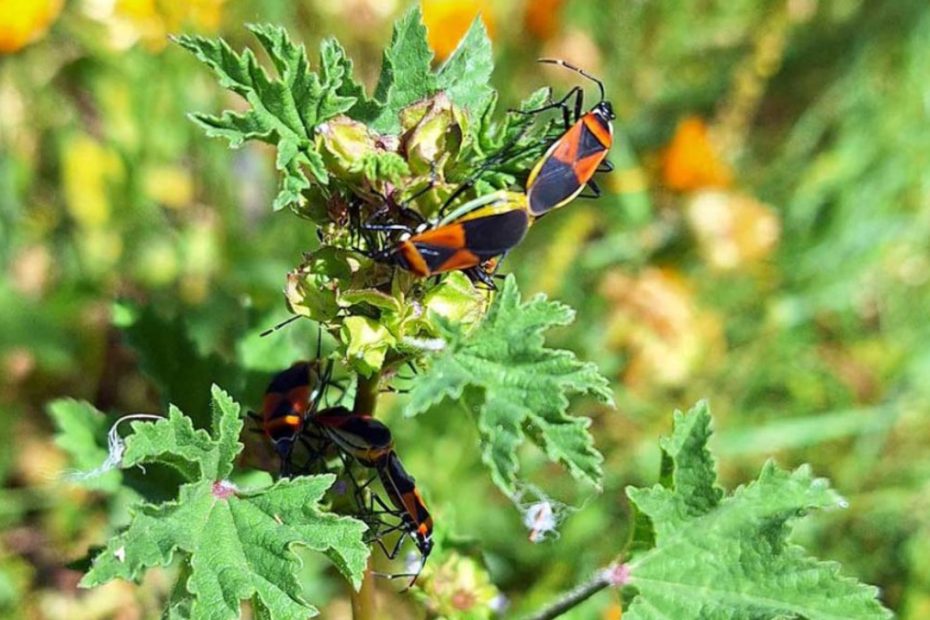Harlequin bugs can turn your garden into a nightmare, feasting on your beloved plants and leaving a trail of destruction. These vibrant yet pesky insects are known for their striking black and red patterns, but don’t let their appearance fool you—they can cause significant damage to your crops and ornamentals.
If you’re tired of seeing your hard work go to waste, it’s time to take action. This guide will walk you through effective strategies to eliminate harlequin bugs and protect your garden. From natural remedies to preventative measures, you’ll find everything you need to reclaim your green space and keep it thriving.
Key Takeaways
- Understanding Harlequin Bugs: Recognizing the behavior, life cycle, and distinctive black and red coloration of harlequin bugs is essential for effective management.
- Signs of Infestation: Key indicators include wilting, stunted growth, deformed vegetables, and black or brown spots on leaves, stems, and fruits.
- Natural Control Methods: Use eco-friendly options like handpicking, introducing natural predators, and applying plant-based repellents such as neem oil and garlic spray.
- Chemical Control Methods: For severe infestations, insecticidal soaps and chemical pesticides (e.g., carbaryl, malathion, pyrethrins) offer effective solutions but should be used judiciously.
- Prevention Tactics: Implement crop rotation, companion planting, and maintain proper garden hygiene to create an unfavorable environment for harlequin bugs.

Understanding Harlequin Bugs
Understanding harlequin bugs is crucial to removing them from your garden. These voracious pests pose a threat to various plants. Knowledge about their behavior, appearance, and life cycle helps in devising effective strategies for eradication.
What Are Harlequin Bugs?
Harlequin bugs, scientific name Murgantia histrionica, are hematophagous insects. They belong to the stink bug family, Pentatomidae, and are native to North and Central America. These pests primarily feed on cruciferous vegetables like cabbage, broccoli, and Brussels sprouts.
Key Terms:
- Hematophagous: Feeding on the juices of plants.
- Cruciferous Vegetables: Plants in the Brassicaceae family, such as cabbage and kale.
Harlequin bugs are known for their distinct appearance and destructive feeding habits. Females lay clusters of 12 eggs on the underside of leaves. After hatching, nymphs and adults suck plant sap, causing wilting and discoloration, eventually killing the plants.
Identifying Harlequin Bugs
Identifying harlequin bugs involves examining both physical characteristics and behavior. These bugs have easily recognizable features, making detection straightforward.
Physical Characteristics:
- Color: Bright black and red coloration.
- Size: Adult bugs are roughly 3/8 inch long.
- Shape: Shield-shaped bodies.
Behavioral Traits:
- Feeding: Sucks sap from leaves, stems, and fruits.
- Lifecycle: Females deposit eggs in clusters; nymphs pass through multiple instars before maturing.
- Eggs: Small, barrel-shaped, cream-colored with two black bands.
- Nymphs: Range from orange to black as they develop.
By understanding harlequin bugs’ precise appearance and habits, you can promptly identify infestations. Early detection is essential for minimizing damage and effectively targeting these pests.
Signs Of Infestation
Discovering harlequin bugs early can save your garden from significant damage. Understanding the signs of infestation helps you take timely action against these destructive pests.
Damage Caused By Harlequin Bugs
- Wilting and Discoloration: Harlequin bugs feed on plant sap, leading to wilting and yellowing of leaves.
- Stunted Growth: Infested plants often exhibit stunted growth and reduced vigor.
- Deformed Vegetables: Feeding damage can cause deformed vegetables, particularly in cruciferous plants.
- Black and Brown Spots: Puncture wounds from harlequin bug feeding result in black or brown spots on leaves, stems, and fruits.
Common Host Plants
You can often find harlequin bugs on various host plants, particularly those in the Brassicaceae (mustard) family:
- Cabbage: Harlequin bugs frequently target cabbage, causing significant leaf damage.
- Broccoli: These pests puncture young broccoli leaves, leading to discoloration and deformity.
- Cauliflower: Infested cauliflower displays wilting and discolored spots.
- Radishes: Harlequin bugs feed on the foliage of radish plants, impacting growth.
- Mustard Greens: These vegetables attract harlequin bugs, resulting in damaged leaves.
Properly identifying the damage and recognizing host plants enables you to manage harlequin bug infestations more efficiently.
Natural Control Methods
Natural control methods offer eco-friendly solutions to manage harlequin bugs in your garden. Explore how these methods can help maintain your plants without harmful chemicals.
Handpicking And Crushing
Handpicking involves manually removing harlequin bugs. This method is effective for small gardens.
- Early Morning Activity: Harlequin bugs are less active in the early morning, making them easier to catch.
- Crush or Submerge: Either crush the bugs or drop them into soapy water to kill them.
Using Natural Predators
Introducing natural predators helps maintain biological control over harlequin bugs.
- Ladybugs: These beneficial insects consume harlequin bug eggs and nymphs.
- Parasitic Wasps: These wasps lay eggs inside harlequin bug eggs, disrupting their lifecycle.
Plant-Based Repellents
Plant-based repellents deter harlequin bugs effectively. These repel rather than kill.
- Neem Oil: Natural and non-toxic, neem oil disrupts the hormonal balance of harlequin bugs, deterring feeding.
- Garlic Spray: A mixture of crushed garlic and water can repel harlequin bugs when sprayed on plants.
To protect your garden from harlequin bugs, use these natural methods consistently and monitor your plants for signs of infestation.
Chemical Control Methods
While natural remedies offer eco-friendly options, chemical control methods can provide immediate and effective results, especially for large infestations of harlequin bugs.
Insecticidal Soaps
Insecticidal soaps, created from potassium salts of fatty acids, target the soft outer body of insects. Applying these soaps correctly can reduce harlequin bug populations without harming plants.
Key Points:
- Mode of Action: Insecticidal soaps penetrate the bug’s outer layer, causing dehydration and death.
- Application: Spray directly on harlequin bugs, ensuring thorough coverage. Reapply every 5-7 days for continued protection.
- Safety: They’re safe for most plants, pets, and humans when used according to label instructions.
Chemical Pesticides
Chemical pesticides can provide rapid control of severe harlequin bug infestations. Use them judiciously to minimize potential environmental and health risks.
Popular Pesticides:
- Carbaryl: Effective but can impact beneficial insects. Use it sparingly.
- Malathion: Broad-spectrum pesticide, kills quickly. Requires proper protective gear during application.
- Pyrethrins: Derived from chrysanthemum flowers, offering a less toxic option. Ideal for targeting harlequin bugs with minimal residual effect.
Application Steps:
- Identify Infestation Levels: Gauge the extent of harlequin bug presence.
- Read Labels: Follow manufacturer guidelines for safe use and dosage.
- Protect Yourself: Wear gloves, masks, and goggles to avoid contact with chemicals.
- Apply Evenly: Spray during calm weather to prevent drift. Focus on infected areas.
- Monitor Impact: Assess after a few days. Reapply if necessary, following label restrictions.
- Avoid the presence of pets and children during application
- Wash hands and exposed skin thoroughly after handling
- Dispose of containers according to local regulations
Properly utilizing chemical control methods ensures your garden remains protected while minimizing environmental impact.
Prevention Tactics
Prevent harlequin bugs from infesting your garden by implementing effective strategies. Use proactive measures to maintain a healthy and pest-free environment.
Crop Rotation
Rotate crops to disrupt the life cycle of harlequin bugs. Avoid planting the same crop family in the same spot each season to prevent pests from establishing themselves.
- Annual Rotation:
Switch between different plant families each year. For example, replace cruciferous vegetables with legumes or solanaceous crops. - Break Pest Cycles:
Reduce the chances of harlequin bugs locating their preferred hosts. This practice minimizes pest populations over time.
Companion Planting
Use companion planting to deter harlequin bugs naturally. Plant certain species together to repel pests and promote a healthy garden ecosystem.
- Trap Crops:
Plant sacrificial crops like mustard or radishes nearby. These attract harlequin bugs away from your main crops, making it easier to control them. - Repellent Plants:
Incorporate plants like nasturtiums and marigolds, which repel harlequin bugs. These act as natural deterrents without the need for chemical interventions.
Proper Garden Maintenance
Maintain your garden to reduce spaces where harlequin bugs can hide and breed. Regular care increases the resilience of your plants against pest attacks.
- Remove Debris:
Clean fallen leaves and plant debris regularly. Diminish the hiding spots for pests. - Weed Control:
Eliminate weeds that can serve as alternate hosts for harlequin bugs. Keep your garden beds tidy and free of unnecessary plants. - Healthy Soil:
Mulch and enrich your soil with compost. Healthy soil supports robust plant growth, making them less susceptible to pests.
By applying these prevention tactics, you create a less hospitable environment for harlequin bugs and proactively protect your garden.
Conclusion
Dealing with harlequin bugs can be daunting, but with the right strategies, you can reclaim your garden. By understanding their behavior and using a combination of natural and chemical control methods, you can effectively manage these pests. Remember to stay vigilant and regularly monitor your plants for signs of infestation. Implementing preventative measures like crop rotation and companion planting will further protect your garden. With consistent effort and the right approach, your green space will thrive, free from the damage caused by harlequin bugs.
Frequently Asked Questions
What are harlequin bugs?
Harlequin bugs, scientifically known as Murgantia histrionica, are pests that primarily feed on cruciferous vegetables like cabbage and broccoli, causing wilting and discoloration of plants in gardens.
What do harlequin bugs look like?
Harlequin bugs are identifiable by their bright black and red coloration and shield-shaped bodies, making them easy to spot in your garden.
How can I tell if my garden has a harlequin bug infestation?
Common signs of infestation include wilting and yellowing of leaves, stunted growth, deformed vegetables, and black or brown spots on plants.
Which plants are most susceptible to harlequin bug damage?
Plants in the Brassicaceae family, such as cabbage, broccoli, cauliflower, radishes, and mustard greens, are particularly vulnerable to harlequin bug infestations.
How can I naturally control harlequin bugs in my garden?
Handpicking bugs, introducing natural predators like ladybugs and parasitic wasps, and using plant-based repellents like neem oil and garlic spray are effective natural control methods.
What chemical options are available for controlling harlequin bugs?
Insecticidal soaps and chemical pesticides like carbaryl, malathion, and pyrethrins can be used, but it’s important to follow safety guidelines and proper application techniques.
What prevention tactics can help protect my garden from harlequin bugs?
Implementing crop rotation, companion planting, and maintaining proper garden hygiene by removing debris and controlling weeds can create a less hospitable environment for harlequin bugs.
